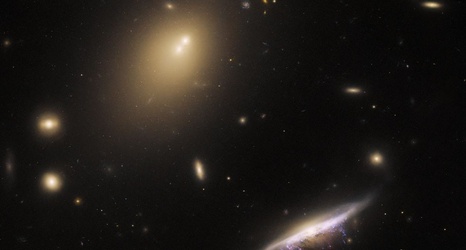The Hubble Space Telescope has obtained an incredible image of a galaxy in the constellation Pegasus, approximately 800 million light-years from Earth. The JW100 galaxy is a particular sort of “jellyfish galaxy”. There are lengthy tendrils lit up by star formation clumps that seem to be streaming away from the central core of the galaxy. This gives it a jellyfish-like look.
When galaxies come into contact with the diffuse gas that permeates galaxy clusters, a process known as ram pressure stripping takes place. This process produces the tendrils. It works as a headwind, removing gas and dust from the galaxy.
